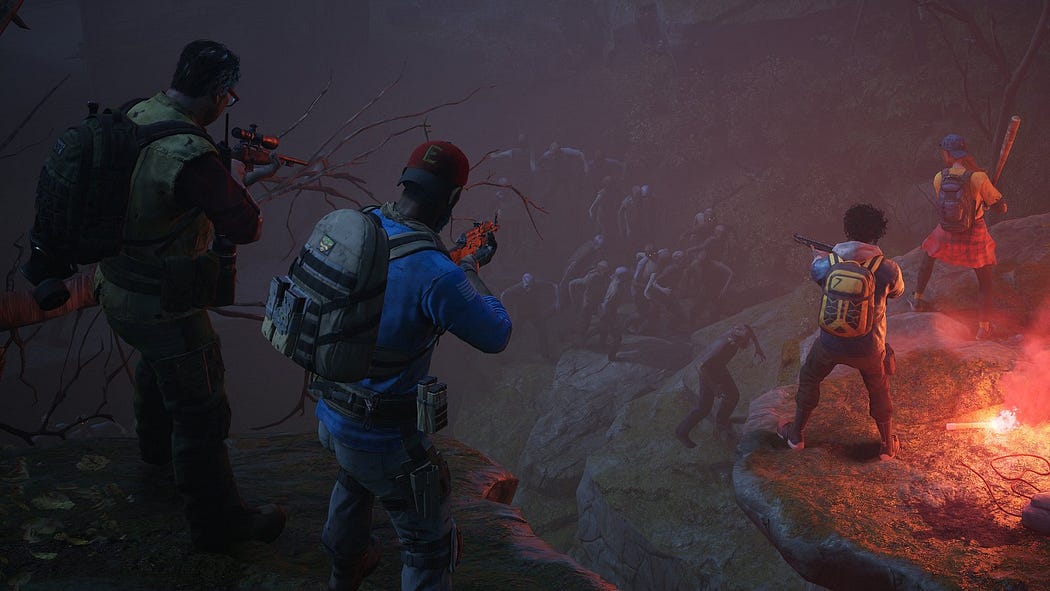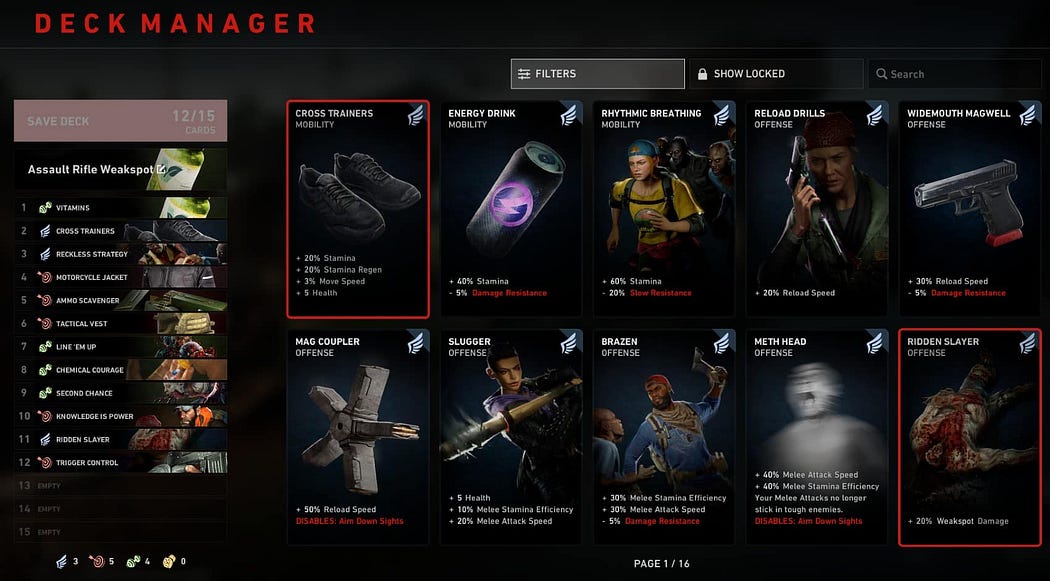Back 4 Blood Review: Fixing What Isn’t Broken
The good and bad of Left 4 Dead’s spiritual successor

Back 4 Blood made many tweaks to the tried-and-tested Left 4 Dead formula to varying degrees of success.
Right from its title, Back 4 Blood inevitably faces the dilemma stemming from its inseparable history with Left 4 Dead: how similar is developer Turtle Rock Studios (TRS) going to make the game to its Valve counterpart?
If the game ended up being too similar to the two Left 4 Dead games, players will say it’s a carbon copy void of any creativity and innovation. Conversely, going the opposite direction may also attract ire from players; that its complete difference from the Valve titles would mean Back 4 Blood was just riding on its past reputation, that it was exploiting the hype generated from loyal Left 4 Dead fans.
Of course, the most ideal course of action for Back 4 Blood is to do neither of the extremes. After all, it is a spiritual successor to Left 4 Dead with many similar elements: quirky survivor personalities, terrifying special zombie enemies, point-A-to-B gameplay filled with panic events, snappy gunplay, and of course, buckets of blood.
At the same time however, it is apparent that TRS made some significant changes to the Left 4 Dead formula. Some changes are better than others, but ultimately Back 4 Blood leaves an impression that it fixed something that is not broken.
The Cleaners

Instead of Left 4 Dead’s “Survivors”, you’ll play as “Cleaners” in Back 4 Blood.
One of the first things player may pick up on is that the Cleaners lack depth compared to their Left 4 Dead counterparts. In-character banters are mostly replaced by contextual voice cues. Conversations between the Cleaners are few and far in between in the game, and not all of them manage to fully flesh out the character traits of the Cleaners.
However, the controlled nature of dialogue in Back 4 Blood compared to Left 4 Dead’s mostly candid interactions can be explained with the game’s narrative direction; after all, the Cleaners are not “survivors” constantly on the defensive seeking shelter, instead they are on the offensive finding ways to “clean” the streets of the undead. It is even alluded on the game title: they are not left for dead, they are back for blood.
That being said, even with character traits being more spread out among the eight characters instead of Left 4 Dead’s four, each of the Cleaners have their own unique traits enough to make them somewhat believable. While not as engaging as, say, Left 4 Dead 2’s Ellis and his unapologetic Southern hospitality, each Cleaners’ personalities are enough to keep gameplay from becoming stale.
It is also worth mentioning that parts of the Cleaners’ personality translate to their unique in-game abilities and buffs. For instance, the daringly energetic Holly is filled with snarky one-liners and upbeat personality, which is reflected on her good affinity with melee-based combat. On the flip side, the pragmatic Doc that reveres hygiene and despises unattended wounds reflects her more supportive medic role in the team.
The Special Ridden

When talking about B4B’s tendency to fixing what is not broken, the special enemy types — referred to “Special Ridden” in-game — comes to mind.
There are more types of Special Ridden in B4B than there are Special Infected in L4D. However, quantity does not necessarily mean quantity.
Turns out, not only that B4B has different types of Special Ridden, but the game also has different sub-classes for each type of Special Ridden with similar designs and modes of attack. This design choice can be beneficial for the game as it allows for gameplay variety, but the execution is far from perfect.
Let’s take a look at the Tallboy Special Ridden class, which consists of the default Tallboy, the Crusher, and the Bruiser. This class is easily identifiable by their towering stature and oversized right arm, which they use to deal massive damage to Cleaners: Tallboys slam it to the ground, Crushers use it to grab and squeeze the life out of Cleaners, while Bruisers flail it wildly in a combination of attacks.
The problem here is that a Bruiser’s attack pattern clearly overlaps that of the Tallboy, as a Bruiser can also slam its arm to the ground while a Tallboy can also swing its arm in a sideways arc, albeit with less agility compared to a Bruiser. This renders either one Special Ridden completely redundant and makes adapting to their attacks a hassle, a situation not helped by the two Special Riddens’ similar designs.
Unfortunately, problems do not only come from a design standpoint, but also from a more technical area; the Ridden enemies are plagued with inconsistent hit detection and unbalanced attack patterns. Some Special Riddens attack constantly without breaks in their combined animations, not letting players counteract properly which can leave the impression of the game not rewarding players for studying the Special Riddens’ moves.
And let’s not forget the usual pitfalls of modern video games: buggy enemy AI. Sadly, B4B is not completely free of such problems, although they don’t completely disrupt the flow of the game. Sometimes Special Ridden can get stuck under the map or to the ceiling, and sometimes they can outright phase through walls. Not a dealbreaker, but an issue worth mentioning.
Despite the shortcomings in the Special Ridden department, the same cannot be said for the more powerful Boss Special Ridden, which are solid additions to the game. The Hags are terrifying and sometimes unsettling while both the Breakers and the Ogres serve as a good test of teamwork — and aim — of a Cleaner team.
The Acts

Instead of Campaigns, B4B players get acts or runs, each filled with clusters of chapters with varying lengths. Sometimes a set of chapters can be as short as just two chapters, while some other sets can be as long as a full-fledged L4D campaign with four or five chapters.
Again, due to the narrative structure of B4B, the game lends itself to a wider variety of objectives compared to L4D, although the point-A-to-B gameplay still persist. There is a noticeable touch of creativity when it comes to triggering panic events and the objectives surrounding it. This leads to some exciting moments, be it terrifying scenarios like running through an infested quarantine center or fun escapades like shooting up a bar full of Ridden to “Tick Tick Boom” by The Hives.
The healthy range of scenarios can be attributed to B4B’s location setting for its chapters, which can be described as reasonably diverse, just wedging in between L4D and L4D2. There are countrysides, mountain ranges, forests, suburban areas, and some unique locales like a ship graveyard for Cleaners to kill the Ridden in. The narrative that flows in these chapters are direct in nature with objective markers being readily present for players, compared to both L4Ds where the story naturally unravels as players traverse through the stages.
The acts in B4B can be completed online or offline. Of course, that means it’s time to address B4B’s elephant in the room: the offline mode or as it was referred to in-game, the solo campaign, which is a big minus for the game.
The main takeaway of playing through the acts is to obtain supply points (which can be used to unlock cards and cosmetics) and earn achievements. None of these can be achieved by playing through the solo campaign.
Lack of progression is not the only issue plaguing the solo campaign; the buggy AI problem does not only apply to Special Ridden but to AI-controlled Cleaners as well. Often times they would get stuck on terrain, getting lost due to terrible pathfinding, or the worst case, idly look by while players are in a pickle.
However, like most questionable decisions in B4B, the strip-down of the solo campaign can be explained with its link to B4B’s card deck system; all player cards are available to use in the solo campaign. Still, one cannot help but feel like this is a misstep on TRS’ part since not all players want to grind for progression online. While it can be argued that the solo campaign is for players to test out their own customized card deck, what good is testing it when that card deck is not readily available when it matters the most, i.e. playing online?
The Cards

Speaking of cards, this is where B4B majorly diverges from its spiritual predecessor: the card deck that plays an integral part in a player’s run through an act.
The card mechanic in B4B goes both ways: the AI Director of the acts and the players. The AI Director plays cards that makes completing chapters more challenging, which usually comes in the form of tougher Special Ridden, inclusion of common Ridden that deal more damage, and environmental hazards like fogs or darkness that shrouds the entire chapter. This inexplicably forms the identity of B4B’s difficulty: it is more artificial and fabricated compared to L4D’s more organic and immersive feel.
As for the players’ side, the cards function exactly like they should have: they provide buffs, some more unique than others, that can dictate how a player can approach the game. Some cards encourage high-risk-high-reward gameplay, while others reward shooting accuracy or teamwork. Of course, this can lead to players developing builds catering to unique playstyles.
The problem with card deck system in B4B is, unsurprisingly, the counter-intuitive implementation: players can only activate one card at the start of each chapter, sometimes at which point the AI Director had already stacked absurdly challenging cards against the player. Players also can’t change card decks once they start an act (not a chapter), which severely limits their adaptability to the Director’s tricks.
As a result, opening levels where players have little to no cards to buff their Cleaners can become nightmarish on higher difficulties, where the Ridden have more health and deal more damage even without the usage of AI Director cards.
All of B4B’s technical hiccups can not take away its superb presentation compared to L4D. It has better overall presentation in superior graphical fidelity, excellent sound design, and good animations.
But at the end of the day, it is hard to ignore B4B’s misfires: the acts are exciting and the presentation is amazing, but many parts of the game need improvement and/or adjustment, especially in the balancing and gameplay department. All in all, a step forward and two steps backward when compared to its now-legendary Valve counterpart.
That being said, B4B is a decent zombie game in its own right, and has the potential to be able to hold a candle to L4D. It may not be as good as its spiritual predecessor right now, but it is a game with potential for greatness, provided TRS has the dedication to iron out the game’s wrinkles.
